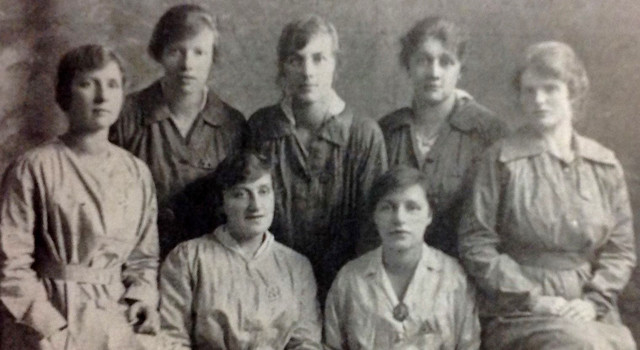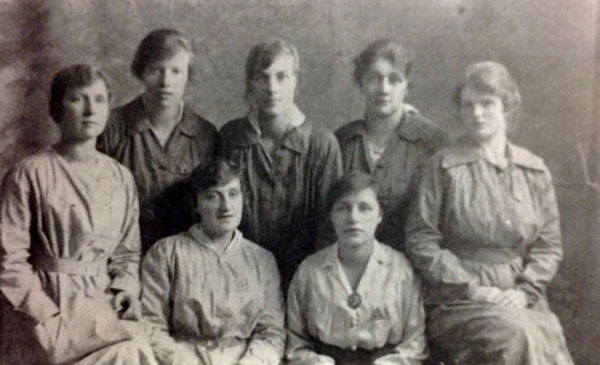Articles

No Comments
By Voices
On 25, May 2015 | No Comments | In Gender | By Voices
Women Munitions Workers and the Trade Unions
Cathy Hunt, Coventry University
The women who went into Britain’s munitions factories during the First World War were encouraged and praised in their endeavours to ensure that the men at the Front were kept supplied with the weapons and military equipment that were so vital to the war effort.
According to press and government, women workers had never had it so good, earning so much money they didn’t know what to do with it. In 1917, when trade union leader Mary Macarthur overheard an employer warning of the serious moral danger of young women earning too much money, she pointed out that it was strange that she had never heard an employer either before or during the war express concern about the moral dangers associated with low wages [1].
 Many had indeed been liberated from the low paid work of pre-war days and were now enjoying the companionship of working in large factories as opposed to the isolation of domestic service, of working in the home or in small workshops. Women had many different reasons for taking up munitions work, including for some a sense of patriotic duty, of doing their bit for the men at the Front, or the chance to embrace new opportunities away from home, away from the confines of low status, hidden work. Certainly many women did receive substantially more in their pay packets than before the War but the working week was excessively long and overtime inescapable. The wartime cost of living soared and women with families needed every penny that they could make. On their side were trade unions offering support and working tirelessly during the war to represent their members. Every pay award was fought for and campaigns for improved working conditions were vital in such dangerous industries. Despite government promises to provide women munitions workers with minimum wage rates, it was often up to the unions to make sure that women received the correct and fair rate for the jobs they were employed to do, although it is important to note that, largely as a result of war time changes to work practices, very few women ever received equal pay with men.
Many had indeed been liberated from the low paid work of pre-war days and were now enjoying the companionship of working in large factories as opposed to the isolation of domestic service, of working in the home or in small workshops. Women had many different reasons for taking up munitions work, including for some a sense of patriotic duty, of doing their bit for the men at the Front, or the chance to embrace new opportunities away from home, away from the confines of low status, hidden work. Certainly many women did receive substantially more in their pay packets than before the War but the working week was excessively long and overtime inescapable. The wartime cost of living soared and women with families needed every penny that they could make. On their side were trade unions offering support and working tirelessly during the war to represent their members. Every pay award was fought for and campaigns for improved working conditions were vital in such dangerous industries. Despite government promises to provide women munitions workers with minimum wage rates, it was often up to the unions to make sure that women received the correct and fair rate for the jobs they were employed to do, although it is important to note that, largely as a result of war time changes to work practices, very few women ever received equal pay with men.
Unions including the all-female National Federation of Women Workers and the mixed sex Workers’ Union relied on dedicated teams of women organisers, shop stewards and branch activists to recruit new members and persuade women workers of the benefits of being in the union. Membership amongst women rose substantially during the war but when it ended and jobs in the munitions factories were lost, many of these organisers went on to face some of their biggest challenges. Now they had to encourage women to take their knowledge and experience of union life back into the types of low paid jobs that so many had little choice but to return to and where union membership in jobs such as domestic service, laundries, cleaning and hotel work, had been very difficult. The 1920s were to be a testing time both for women workers and for their unions.
[1] Woman Worker, August 1917



Submit a Comment